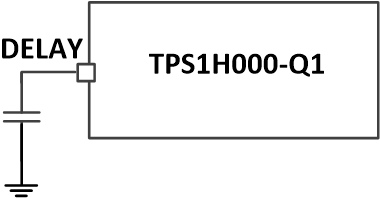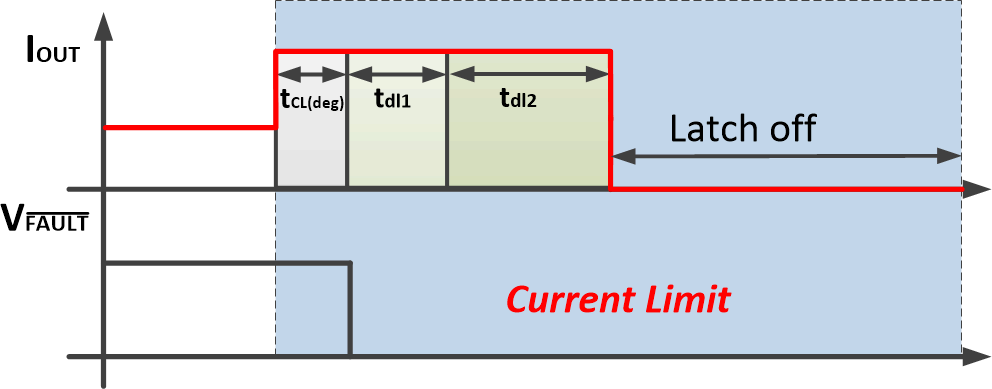ZHCSH03C August 2017 – June 2019 TPS1H000-Q1
PRODUCTION DATA.
- 1 特性
- 2 应用
- 3 说明
- 4 修订历史记录
- 5 Pin Configuration and Functions
- 6 Specifications
- 7 Detailed Description
- 8 Application and Implementation
- 9 Power Supply Recommendations
- 10Layout
- 11器件和文档支持
- 12机械、封装和可订购信息
7.3.2.2 Latch-Off Mode
Latch-off mode is active when the DELAY pin connects to GND through a capacitor. When hitting a current limit, the output current holds at the setting current, but latches off after a preset DELAY time (tdl1+ tdl2). tdl1 is the default delay time, tdl2 is a configurable delay time set by a capacitor. The output stays latched off regardless of whether the current limit is removed. The output recovers only when IN is toggling.
tdl2 can be calculated by Equation 2. The Idl(chg)is the device charging current in latch-off mode, Vdl(ref) is the internal reference voltage in latch off mode, tdl2 is the user-setting delay time, and CDELAY is the capacitor connected on the DELAY pin.

 Figure 16. Latch-Off-Mode Connection
Figure 16. Latch-Off-Mode Connection  Figure 17. Latch-Off-Mode Example
Figure 17. Latch-Off-Mode Example